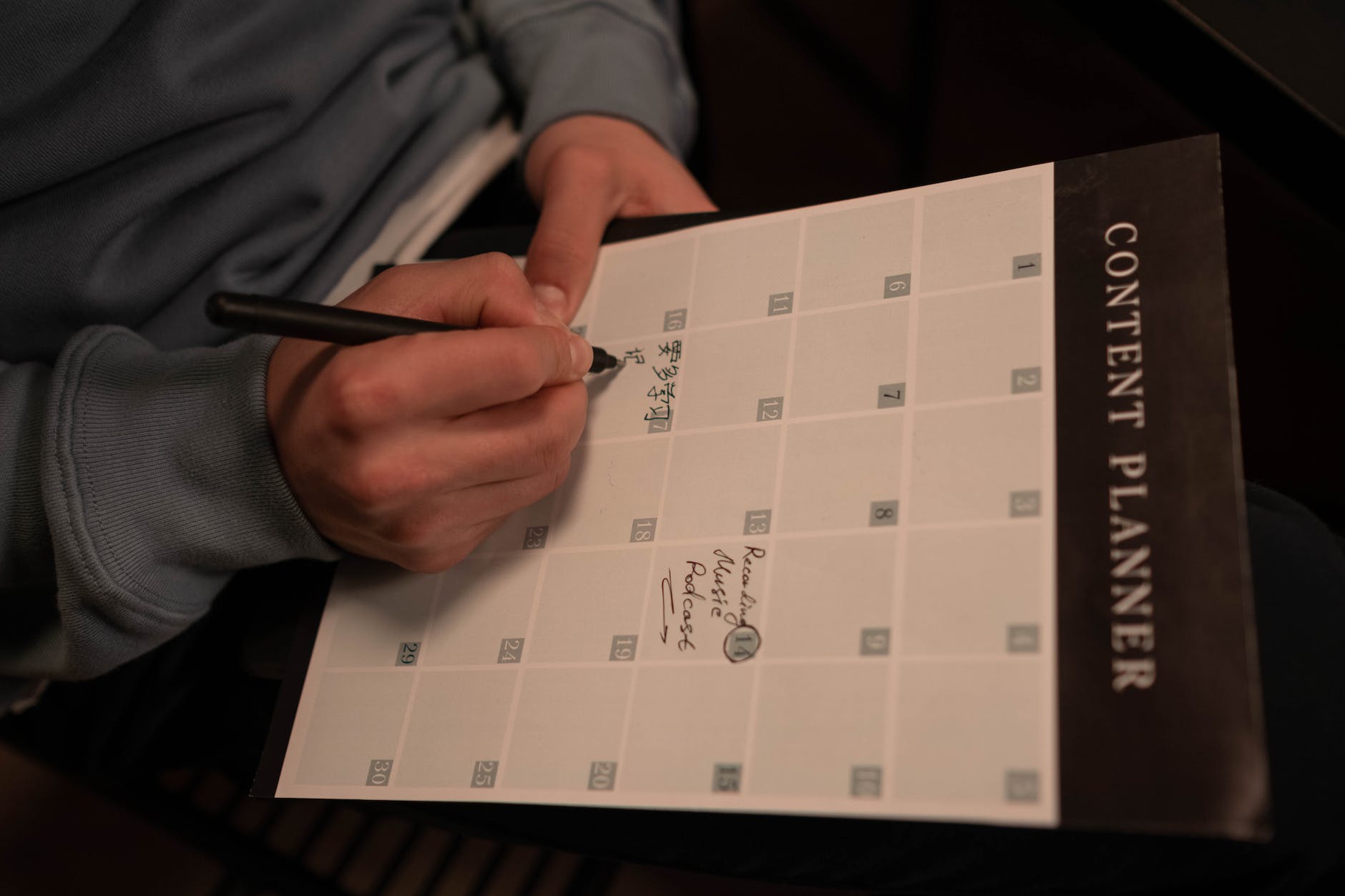If you don’t know what bullet journaling is, you are missing out. But you somehow landed here. So, chances are you’re pretty familiar with the concept. If bullet journaling is completely foreign to you, then start here. This post covers all the different bullet journal hacks you can use to increase your productivity.
Simple and Effective Bullet Journal Hacks

These are some of the basic things you can do you make your bullet journal work for you. Increase your productivity with a few simple additions to your bullet journal system.
Use An Index
Many notebooks are designed to be bullet journals. So they come with indexes already created for you. But if you don’t have one like this, leave the first few pages blank and number the rest. Record all of your most important pages in your index, highlighting the content you need to access often. Knowing where things are located not only decreases stress, but it also helps you spend less time searching for things and more time getting things done.

Check out this page for inspirational ideas on keys and indexes.
Create a Functional Key
An index will help you locate pages you’re looking for, but what about when you arrive at that page? How do you quickly find what you need without reading the entire spread? The answer is by developing a functional key. This is by far one of the best and simplest bullet journal hacks.

It’s a good idea to have your key right at the front of you bullet journal. Or you could create a pop out key as picture below. Use symbols that work for you. Don’t worry about what everyone else is using. Once you have symbols for all of your various tasks, appointments, and notes, then create a color coding system. This way you can easily differentiate between a task for school and one for your cleaning routine. Try to visualize different areas of your life as categories, then choose a color for each one. If you’re into minimalist bullet journaling, you can use different patterns or shapes instead of colors.
The Better Way to Track Habits
Start small, stay smaller. It’s tempting to use every single habit tracker you see on the internet. I’ve done it, many of you may have as well. But that’s not helping you. It’s actually highly unproductive. So how can you fix this problem? Choose three areas of your life where you really want to improve. Then develop habit trackers for each of those areas. Over the next week, track those habits. Then re-evaluate:
- Which habit tracking actually resulted an improvement?
- Which trackers made you stress out more?
- Were there any habits you didn’t track?
- Are there different habits you can add instead?
- Would it be more motivating if the design were different?
- Does designing any of these trackers stress you out?
- Are you more focused on completing the tracker, or on actually improving your habits?
Key take away from this is you need to make your habit trackers work for you. They need to be tools and not obligations, not simply another thing on your to do list. Yes they’re fun to make and fun to look at when they’re complete. But if they aren’t helping you improve anything besides your creative design skills, are they actually necessary? Let me know how your habit tracker detox goes in the comments. Take it slow and be kind to yourself.

Time Blocking
Time blocking is such an eye opening exercise. It’s also one of the easiest bullet journal hacks on this list If you’re one of those people who thinks they simply “don’t have time,” this exercise is just what you need. It’s relatively easy to do. Create a chart or table in your bullet journal of all the hours in a day. You will document your activities for an entire week. You could also use a calendar app, like Google Calendars. All you really need is a place to fill in what you’re doing throughout the day.

Time Blocking Process:
- Think about your daily life and go through your day to day activities to analyze your time.
- Once you have your time table set up, choose a color or symbol for the time slots you absolutely cannot change. These would include things like working, going to school, eating, sleeping, and other obligations. Block them off with your chosen color.
- Next choose a color for your commute times. Block out times spent traveling to and from work or school, or other places you commute to every day. These will be called “flex time,” time allocated to one activity that could be used for multitasking.
- Then, block out time slots for things you want to do. Make them look different from your obligations and commute times. Don’t worry, we won’t be taking this time away from you.
- After that, analyze your time slots for any free time. That’s the gold mine you’ve been seeking. Is there more than you thought? Don’t worry if there isn’t.
- You’ve created a theoretical picture of your day to day activities. The final step is to record the actual amount of time you used for each activity. Then compare these two to see if your initial evaluation of your time was accurate.
You may notice there is a bit more wiggle room in your schedule than you thought. How long does your morning routine take? Can you add a quick brainstorming session? Do you ride to work? Can you bring a book or a small project to work on while you commute? If you drive, consider ditching the noisy radio for meditation, listening to a book, or other passive activity that adds to your productivity. Do this time blocking exercise often to reevaluate your time and how you’re using it.
Free Printable Time Blocking Worksheet:
By the end of this exercise you should have a solid idea of how much flex time and free time you actually have. Now it’s time to decide how to use it. If you’re really motivated, you could squeeze in some tasks where you had fun things scheduled. Just don’t over do it. You need time to unwind as much as you need time to get things done.
Make Your Bullet Journal Adaptive (Be Flexible)
Flexibility and expectations go hand in hand. The more you expect something to turn out a specific way, the less flexible you are when things don’t go as planned. Relax your expectations and try to understand things happen all the time to wreck your plans. But it’s not the end of the world and you can adapt to change.
The same is true for your bullet journal. Let’s say you plan out your week and nothing goes right. Are you tempted to rip out that page? Don’t be. Keeping track of when things get messy is a good thing. It shows your perseverance and ability to adapt. Reflect on those weeks and remember how you coped in difficult times.
Mistakes happen too. Many people don’t like crossing things out. Instead, you can turn mistakes into a doodle or sketch or something else creative. This puts less pressure and stress on you to create a “good looking” bullet journal and allows you to focus on organizing your thoughts and creating plans. Check out this post for ideas on how to transform mistakes into art.

Use your spreads for multiple purposes. For example, include a small habit tracker with your weekly set up. This way you’ll see it more, keeping you focused and motivated to keep to those habits. You can also include vision boards in your monthly logs, inspirational quotes with your daily records, or even turn a daily log into a brain dump. Keeping an open mind about what’s in your bullet journal will help make it work for you, instead being more work to do.
What are some bullet journal hacks you have used in your bullet journal to make it more flexible? Does it help with your productivity? Share in the comments!
Cash In on Collections
Unlike Habit Trackers, you can never have enough collections. Don’t get bogged down in the idea that they need to be in the front your bullet journal either. Although it is a great idea to leave lots of room for collections in the beginning of your bullet journal, if you run out of room, it’s not the end of the world. I have collection pages all over my bullet journal. This is why the index is so critical. If you need to create a collection in the middle of your notebook, you can still easily reference it by using your index.
Using color coding for your collections is also a great idea and an ideal way to easily locate critical information. Add the color schemes to your key, then color the edge of the page holding that collection. You’ll be able to instantly access your collection at a single glance.
Collections can be brain dumps, highly organized systems, notes pages, creative works of art, outlines, stories, etc… Craft collections whenever you need to. Whatever helps you stay focused, get organized, and be more productive. This is the most useful part of a bullet journal.
Work Your Logs
Yearly, Monthly, Weekly, and Daily Logs can all be used for tasks, appointments, and reminders. But you can turn them into bullet journal hacks. Use them as goal and project planning phases:
- Yearly logs are your largest goals and projects (the main ideas)
- Monthly logs can be used to break your goals down into tasks and action plans
- Weekly logs are smaller action groups – tasks to complete and next steps in action plans
- Daily logs are records of what’s been accomplished and what still needs to be done
- You can also use quarterly reviews to reevaluate your projects and goals.


You can also use your logs to your advantage by simply recording and analyzing tasks and appointments as they occur. This helps you stay productive because you don’t have to remember everything. It’s all laid out neatly for you. Checking things off a to-do list is both satisfying and motivating.




